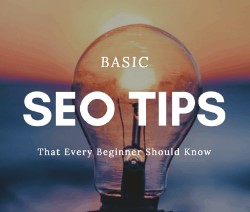One of the most powerful ways to drive traffic to your website or blog is through Search Engine Optimization (SEO). SEO is the process of optimizing your website and content so that it ranks higher in search engine results pages (SERPs), ultimately making it more visible to potential readers. The higher your blog ranks on search engines like Google, the more organic traffic it can attract, leading to increased readership, engagement, and even revenue opportunities.
In this article, we’ll delve into several effective SEO strategies and tips to boost blog traffic. Whether you’re a seasoned blogger or a newcomer, applying these techniques will help your blog reach its full potential.
1. Conduct Keyword Research
Effective keyword research is the foundation of any successful SEO strategy. Keywords are the terms and phrases that users enter into search engines when looking for information. If you target the right keywords, your blog will be more likely to show up when those terms are searched.
How to conduct keyword research:
Use Keyword Research Tools: Tools like Google Keyword Planner, Ahrefs, SEMrush, Moz, and Ubersuggest can help identify relevant keywords for your niche. Look for keywords with high search volume and low competition.
Focus on Long-Tail Keywords: Long-tail keywords (phrases containing three or more words) are often less competitive and more specific, which means you’re more likely to rank for them.
Consider Search Intent: Search intent refers to the reason behind a user’s search query. Are they looking to buy something, learn something, or find a solution to a problem? By understanding search intent, you can create content that aligns with what users are actually looking for.
Once you identify your target keywords, ensure they are strategically placed in your blog’s title, headers, meta descriptions, and throughout the content.
2. Optimize On-Page SEO
On-page SEO refers to the optimizations you can make directly on your blog to help search engines understand the content and relevance of your page. It’s a critical part of improving your rankings and driving traffic.
Key on-page SEO elements:
Title Tags: Your blog’s title tag is one of the first things that search engines and users see. It should include your primary keyword and be compelling to encourage clicks. Aim for around 60 characters, as longer titles may get cut off in the search results.
Meta Descriptions: While meta descriptions don’t directly affect rankings, they can influence click-through rates (CTR). Write a concise, informative meta description that includes your main keyword. Keep it under 160 characters.
Header Tags (H1, H2, H3): Headers organize your content and make it more readable for both users and search engines. Ensure that your primary keyword appears in at least one header tag, preferably the H1 tag. Use H2s and H3s to structure the content and improve readability.
Internal Linking: Internal linking refers to linking to other blog posts or pages on your website. This helps users navigate your site and also distributes page authority across your blog. Use descriptive anchor text and link to relevant pages or posts.
Image Optimization: Large image files can slow down your site, which can negatively affect your rankings. Compress images without sacrificing quality and ensure that you use descriptive alt text with relevant keywords.
3. Create High-Quality Content
Content is king when it comes to SEO. The more valuable, engaging, and informative your content is, the more likely people are to read it, share it, and link back to it. Additionally, search engines reward content that satisfies user queries with high rankings.
How to create high-quality content:
Solve Problems: Focus on creating content that addresses specific problems or questions that your audience has. By providing value, you’ll increase the likelihood that your readers will engage with your content and share it with others.
Be Comprehensive: Write in-depth, comprehensive blog posts that cover a topic thoroughly. Google tends to rank longer, more detailed content higher, as it views it as more authoritative.
Update Regularly: Consistently update your blog with fresh content. Search engines favor websites that are regularly updated with new and relevant content.
Ensure Readability: Break your content into easily digestible sections, use bullet points, and maintain a conversational tone. Readability matters to both users and search engines.
4. Improve Site Speed
Site speed is an important ranking factor for SEO, and it also influences the user experience. Slow-loading pages lead to high bounce rates, where users leave your site before it fully loads. This negatively affects your rankings and can prevent users from returning.
How to improve site speed:
Optimize Images: Compress images and use the appropriate file types (JPG for photos, PNG for graphics).
Use Caching: Caching reduces load times by storing copies of your pages so that they load faster for repeat visitors.
Minimize HTTP Requests: Reduce the number of elements on a page (like images, scripts, or CSS files) that require separate HTTP requests.
Use a Content Delivery Network (CDN): A CDN distributes your content across multiple servers worldwide, reducing load times for users who are far from your original server.
5. Mobile Optimization
More than half of internet traffic comes from mobile devices, and search engines like Google prioritize mobile-friendly websites in their rankings. Ensure that your blog is optimized for mobile users to improve both your SEO and user experience.
Tips for mobile optimization:
Responsive Design: Use a responsive web design that automatically adjusts to different screen sizes and devices.
Fast Loading Times: As mentioned earlier, fast site speed is crucial on both desktop and mobile. Compress your images and minimize large files to ensure that your blog loads quickly on smartphones and tablets.
Easy Navigation: Ensure that your mobile website is easy to navigate with buttons that are large enough to tap and clear, concise menus.
6. Build High-Quality Backlinks
Backlinks (also known as inbound links) are links from other websites that point to your blog. Backlinks are an essential ranking factor for SEO, as they signal to search engines that your content is authoritative and trustworthy.
How to build backlinks:
Guest Blogging: Write high-quality guest posts for reputable blogs in your niche. In return, you can include a link back to your blog in the author bio or within the post itself.
Content Outreach: Reach out to bloggers, journalists, and influencers in your industry to inform them of your content. If they find it valuable, they might link back to it from their own websites.
Broken Link Building: Find broken links on other blogs or websites and suggest your own content as a replacement. This is a win-win situation, as it helps the website owner fix a broken link and gives you a valuable backlink.
Create Link-Worthy Content: Produce content that is naturally shareable or worthy of being linked to, such as research studies, infographics, or data-driven blog posts.
7. Leverage Social Media for Traffic
While social media signals don’t directly influence SEO rankings, sharing your content on social platforms can lead to increased visibility, engagement, and potential backlinks. Social media also drives direct traffic to your blog, which can boost your SEO efforts over time.
Social media strategies:
Share Content Across Platforms: Post your blog articles on social media platforms like Facebook, Twitter, LinkedIn, Pinterest, and Instagram. Tailor your messaging for each platform to maximize engagement.
Encourage Social Sharing: Add social sharing buttons to your blog posts to make it easy for readers to share your content with their networks.
Engage with Your Audience: Respond to comments, ask questions, and participate in discussions to build relationships with your audience. The more engagement your content receives, the more likely it is to be shared and linked to.
8. Use Analytics to Monitor and Improve SEO Efforts
Finally, it’s essential to track and measure the performance of your SEO efforts. Google Analytics and Google Search Console are two powerful tools that can provide valuable insights into how your blog is performing in search results and what areas need improvement.
Key metrics to monitor:
Organic Traffic: Track how much traffic your blog is receiving from search engines.
Keyword Rankings: Monitor how well your target keywords are ranking over time.
Bounce Rate: Keep an eye on your bounce rate (the percentage of visitors who leave after viewing only one page). A high bounce rate could indicate that users aren’t finding what they’re looking for on your site.
Click-Through Rate (CTR): Measure how often people click on your blog posts when they appear in search results. A low CTR might indicate that your title or meta description needs improvement.
Increasing blog traffic through SEO is an ongoing process that requires time, effort, and consistency. By focusing on keyword research, on-page optimization, creating high-quality content, improving site speed, and building backlinks, you can steadily improve your blog’s visibility in search engine results. Additionally, leveraging social media, monitoring analytics, and staying up-to-date with SEO best practices will help ensure that your blog continues to grow in traffic and influence.
Remember that SEO is not an overnight solution but a long-term strategy. By incorporating these tips and optimizing your blog for search engines, you’ll be on your way to increasing traffic and reaching a broader audience in no time.




